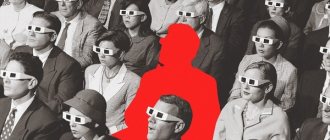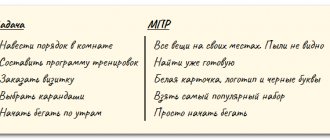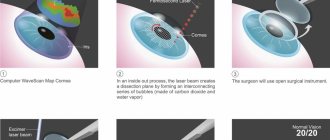Introspection or self-observation is the analysis of the feelings, emotions we experience, or the reasons for our different behavior. In theory, anyone can conduct self-analysis, but how to do it correctly? Why should we use self-analysis and how can it help us solve our own problems? To answer these questions, you need to understand what introspection is.
Introspection is a term that comes from the Latin word introspectio, which literally means “to look within.” This process is otherwise called introspection. This is an independent analysis of emotions, experiences and all other feelings that have an impact on our psyche.
Self-observation in psychology arose quite a long time ago. One of the first people to become interested in introspection was the German philosopher and psychologist Wilhelm Wundt. Introspection began to develop rapidly at the end of the 19th century, when the foundations of modern psychology emerged. Initially, introspection was considered a very promising scientific tool, but over time, this method of psychological research was increasingly criticized. To this day, psychologists are divided into two camps: “for” and “against”. In our time, self-analysis has generally lost its original meaning. However, many researchers say that self-monitoring can be an excellent tool, useful even during psychotherapy. Who is right after all, and what is introspection anyway?
Method Definition
Introspection is a careful in-depth study of one’s feelings, thoughts, experiences, images, and thinking without self-judgment. This definition of introspection in psychology is close to introspection. The literal translation of the term means “look inside yourself.” The main feature of introspection in psychology is considered to be its non-judgmental nature: a person must state the fact of the presence of signs of the action of a stimulus. It is not allowed to give these sensations qualitative characteristics or express your opinion about what is happening.
The researcher's self-observation report provides the researcher with information that will need to be verified using other research methods.
The introspection method opens up the opportunity for the researcher to learn to use his own intuition for a deep understanding of the surrounding reality. Some researchers believe that introspection is the only method that provides the key to understanding a person’s inner world. Other authors dispute this claim. However, the opinions of scientists agree that introspection is a priori characteristic of any scientific research. Before the advent of experimental psychology, the characteristics of the psyche and the content of an individual’s consciousness were studied only through introspection.
The method of introspection and the problem of introspection
Introspective psychology
- a direction in psychological science that considers introspection and introspection to be the main research method. Introspective psychology became widespread at the end of the 19th century under the influence of subjective idealistic philosophy. Representatives of introspective psychology proceeded from the idea of an “internal response” and a person’s ability to observe his feelings, thoughts, and desires. Self-observation can provide interesting facts, but they must be verified using observational methods, experiment, and others. In combination with other methods of psychology, introspection acquires real value.
Method of introspection
– a method of studying the properties and laws of consciousness using reflective observation.
Sometimes it is called the subjective method. Its varieties are the method of analytical introspection
and
the method of systematic introspection
.
Speech report
– the subject’s message about the phenomena of consciousness with a naive (non-introspective, non-analytical) attitude. The same is sometimes called subjective report, subjective testimony, phenomenal data, introspection data.
In the book “Introduction to General Psychology” Yu.B. Gippenreiter gives a description of the method of introspection (Moscow: Moscow State University Publishing House, 1988).
In the psychology of consciousness, the method of introspection (literally “looking inside”) was recognized not only as the main, but also the only method of psychology. This belief was based on the following two indisputable circumstances.
Firstly, the fundamental property of the processes of consciousness is to be directly revealed (represented) to the subject. Secondly, the “closedness” of the same processes to an external observer. The consciousnesses of different people were compared at that time to closed spheres that are separated by an abyss. No one can cross this gap, no one can directly experience the states of consciousness of another person the way he experiences them. It is impossible to penetrate into the images and experiences of other people.
The ideological father of the method of introspection is considered to be the English philosopher J. Locke (1632 – 1704), although its foundations were also contained in Descartes’ thesis about the direct comprehension of thoughts.
J. Locke believed that there are two sources of all our knowledge: the first source is objects of the external world, the second is the activity of our own mind. We direct our external senses to objects in the external world and as a result we receive impressions (or ideas) about external things. The activity of our mind, to which Locke included thinking, doubt, faith, reasoning, knowledge, desires, is cognized with the help of a special, internal feeling - reflection. Reflection
according to Locke, it is “an observation to which the mind subjects its activity” (J. Locke. An Experience on the Human Mind. Selected philosophical works. - M., 1960. - P. 129).
J. Locke notes that reflection presupposes a special focus on the activity of one’s own soul, as well as sufficient maturity of the subject
. Children have almost no reflection; they are mainly occupied with learning about the outside world. It may not develop in an adult either if he does not show a tendency to reflect on himself and does not direct special attention to his internal processes.
So Locke makes at least two important statements.
1. There is the possibility of splits, or “doubling,” of the psyche. Mental activity can proceed, as it were, at two levels: processes of the first level
– perceptions, thoughts, desires;
processes of the second level
- observation, or “contemplation” of these perceptions, thoughts, desires.
2. Every person and even a child has soul activity of the first level. Mental activity of the second level requires special organization. This is a special activity. Without it, knowledge about mental life is impossible. Without it, impressions of mental life are like “fleeing ghosts” that do not leave “clear and lasting ideas” in the soul.
These two theses, namely the possibility of split consciousness and the need to organize special activities to comprehend internal experience, were adopted by the psychology of consciousness
. The following scientific and practical conclusions were made:
1) a psychologist can conduct psychological research only on himself. If he wants to know what is happening to another, he must put himself in the same conditions, observe himself and, by analogy, draw a conclusion about the content of the other person’s consciousness;
2) since introspection does not occur by itself, but requires special activity, it must be practiced and practiced for a long time.
Psychologists of the time noted important additional advantages of the introspection method.
Firstly, it was believed that the causal relationship of mental phenomena is directly reflected in consciousness. For example, if a person wanted to raise his hand and raised it, then the reason for the action is directly known to him: it is present in consciousness in the form of a decision to raise his hand. In a more complex case, if a person evokes compassion in me and I strive to help him in every possible way, it is obvious to me that my actions are caused by a feeling of compassion. I not only experience this feeling, but I know its connection with my actions.
Hence, the position of psychology was considered much easier than the position of other sciences, which must still search for causal relationships.
Secondly, introspection supplies psychological facts, so to speak, in their pure form, without distortion. In this respect, psychology also compares favorably with other sciences. The fact is that when understanding the external world, our senses, when interacting with external objects, distort their properties. For example, behind the sensations of light and sound there are physical realities - electromagnetic and air waves, which are completely different from either color or sound. And they still need to be somehow “cleaned” from introduced distortions.
In contrast, for a psychologist, these sensations are precisely the reality that interests him. Any feeling that a person experiences, regardless of its objective validity or cause, is a true psychological fact. There is no distorting prism between the contents of consciousness and the inner gaze.
Thus, the application of the method of introspection was supported by considerations of the special advantages of this method.
In introspectionist experiments, the usual
object under
normal
conditions;
the subject was required to have a sophisticated
analysis of “internal experience”, an analytical attitude, avoidance of “stimulus error”, etc.
In modern research, the opposite is true. The main burden falls on the experimenter, who must show ingenuity
.
He organizes the selection of special objects or special conditions for their presentation; uses special devices, selects special subjects, etc. The subject is required to give an ordinary
answer in
ordinary
terms.
The term “introspection” is an almost literal translation of the word “introspection,” but these two terms, at least in our literature, have different positions. We will call the first one the method of introspection.
.
The second is the use of self-observation data.
Each of these positions can be characterized by at least the following two points: firstly, by the fact that
and
how it is observed
;
secondly, by how the
data obtained
is used
for scientific purposes.
Thus, we get the following simple table:
Table 1
History of the development of the method
Having understood what the term introspection means, it is necessary to say who is the author of the introspection method.
Introspection as a method of scientific research owes its appearance to R. Descartes and J. Locke. These philosophers viewed introspection as a special type of cognition.
Synonymous approaches can be found in F. Brentano, who used the method of internal observation in his experimental activities.
The followers of the ideas of the founders of introspection were W. Wundt, E. Titchener and the entire Würzburg school of psychology. Wundt combined introspection with laboratory experiment and different ways of conducting it.
Later, in Gestalt psychology, this type of study of one’s own inner world took the form of phenomenological introspection.
In the 19th century, the method of introspection was used as a term to refer to the subjective experiences of participants in psychological studies. This means that scientists made conclusions about certain psychological events and phenomena based not on their own introspective feelings, but on the basis of a report on the subjects’ introspection.
The method of introspection was seriously criticized by behaviorists, who argued that only the externally observable behavioral reactions of individuals can serve as evidence of certain psychological manifestations. Proponents of self-observation were reproached for the lack of objectivity of their method.
In this regard, the original concept underwent some changes: now the participant in the experiment was only required to answer the question asked and report the changes that had occurred by pressing a special button. With the help of these transformations, it was possible to move away from subjectivism in introspection.
The schools of objective and cognitive psychology that formed a little later were opponents of introspection due to the low objectivity of the method. Specialists in these areas argued that it is possible to obtain reliable information about a person through specially organized third-party surveillance.
At the beginning of the 20th century, introspection was recognized as an unscientific, idealistic method whose main problem was its lack of objectivity. But at the same time, it was used in the study of the inner world and spiritual attitudes of the individual, and was traced in the reflective moments of psychological and pedagogical experiments.
We can say with confidence that a method such as introspection is also used in modern psychology. For example, in the methodological literature there is a mention of the practical application of self-observation techniques in humanistic and transpersonal psychology to monitor an individual’s changes in the course of his own thoughts and the formation of moral attitudes.
CRISIS IN PSYCHOLOGY
By the beginning of the 20th century. In psychology, a whole series of trends emerged that were incompatible with each other, and this constituted a unique form of expression for the theoretical crisis of psychological science.
Despite this, psychological science continued to actively accumulate important psychological facts, and the study of physiological processes that correspond to psychological phenomena and processes continued. In a word, it is impossible to imagine this initial period of the existence of psychological science as a period characterized only by theoretical difficulties that created a picture of a general crisis in psychology, since at the same time there was a serious enrichment of psychological knowledge.
The problem of self-observation
In the process of numerous checks, it turned out that the self-observation method does not meet such criteria as reproducibility and the ability to accurately record results. This was explained by the fact that the participants in the experiment were ordinary people who were distracted during the experiment and did not always accurately and timely give feedback to the experimenter.
Thus, introspection was recognized not as a method of studying the mental processes themselves, but the traces that these processes leave in the human mind.
Another problem with using the method is its limitations: the results of self-observation state the fact of the presence of a sign, but do not allow it to be explained. It can only be used to explore ideas, associations and sensations.
METHOD OF OBSERVATION AND SELF-OBSERVATION IN PSYCHOLOGY. EXPERIMENT IN PSYCHOLOGY
Observation is a systematic and purposeful recording of psychological facts in the natural conditions of everyday life.
There are certain requirements for organizing and conducting scientific observation:
– drawing up an observation plan;
– recording the results (most often in the form of an observation diary);
– formulation of conclusions.
The most important requirement for organizing observation is to ensure conditions under which the subject does not know that he is the object of study. If this condition is met, then the researcher collects facts of natural behavior, which is a very important advantage of the observation method.
The disadvantages of the observation method are determined by the passive role of the researcher: low efficiency, poor repeatability, low accuracy, high labor intensity, difficulty in isolating and analyzing the necessary psychological facts.
Self-observation method (introspection). Modern psychology does not deny the importance of introspection, but assigns it an auxiliary role. Self-observation in the form of a verbal report from the subject after or before the experiment serves as additional information for further improvement of experimental methods and, in fact, is not so much a method as an object of research. This method has no independent significance, since the results of self-observation can neither be proven nor disproved; in addition, it should be borne in mind that when a person tries to look into himself, he still sees the objective world reflected in his psyche, and not himself brain, its properties and functioning. Therefore, the data obtained by the method of self-observation are devoid of scientific nature in the modern sense.
Usually in psychology there are two types of experiments: laboratory and natural.
Laboratory experiment. The main advantage of the method is the active position of the researcher, which gives such an experiment the following positive features:
– efficiency: the researcher does not wait for the necessary facts to appear, but creates the situation himself, the conditions that cause the mental process being studied;
– repeatability: high accuracy thanks to the use of modern measuring equipment;
– uniformity of data and, as a result, simpler analysis.
However, the laboratory experiment also has its drawbacks, which can be boiled down to the main thing: the subject knows that he is the object of study, and thus the naturalness of the flow of mental processes is lost. Therefore, the data obtained as a result of a laboratory experiment must be verified under natural conditions of human activity.
Natural experiment. In order to eliminate the main drawback of laboratory experiments - the unnaturalness of mental processes - a natural experiment was developed. According to the principle of organization, it is similar to observation, but differs from it in the active position of the researcher. The researcher, unnoticed by the subjects, organizes their activities in such a way that the necessary psychological characteristics and qualities appear. A type of natural experiment is a psychological and pedagogical experiment, when teaching or educational problems are solved during the experiment.
PRINCIPLES OF MODERN PSYCHOLOGY. METHODS OF PSYCHOLOGY
The principle of determinism. This principle means that the psyche is determined by living conditions and changes with changes in lifestyle. If we talk about the psyche of animals, it is believed that its development is determined by natural selection as a biological law.
The principle of the unity of consciousness and activity.
Consciousness and activity are neither identical nor opposite – they are a unity. Dynamic models of reality are formed in a person’s consciousness, allowing him to navigate the environment and carry out activities in accordance with this. The principle of the unity of consciousness and activity allows psychologists who study behavior and activity to find out those internal psychological mechanisms that ensure the success of achieving the goals of activity, that is, to discover objective laws of the psyche.
The place of method in philosophy
In philosophy, introspection is the basis of the psychological methodology of the retrospective direction of this science. The essence of Augustine's method of introspection is to free the mind and systematize a person's feelings, which his students agreed with. Preoccupation with one's own emotions can interfere with normal interpersonal relationships.
Introspection translated means “self-observation,” which in philosophy helps a person to calm the storm of feelings within himself. Introspection as a research method in psychology underlies a person’s knowledge of his own personal characteristics.
Place of method in psychology
During the Soviet period, introspection was the main method of psychology that people used to control the work of their own psyche. Introspection is characterized by the need for long training. This is the only way to deal with subjectivity.
The method of introspection and self-observation made it possible to reveal the content of such elements of consciousness that cannot be decomposed into feelings. In addition, unconscious reasons for some patterns were discovered.
However, the results of self-observation of one or another mental process were contradictory not only among different people, but also among the same subject. Thus, the method of introspection gave rise to a serious problem of the objectivity of introspection in psychology, calling into question the subject of study, the basic concepts and provisions of this science.
Scientists have concluded that such observation has limited capabilities. Over time, this method transformed into retrospection.
THE PLACE OF PSYCHOLOGY IN THE SYSTEM OF SCIENCES
In this question, we will look at the basic sciences that are somehow related to psychology.
The object of research in psychology is a person. But a person, if considered from the point of view of an object, can be considered from various sides: as a biological object, as a social being, as a bearer of consciousness. Despite this, a person is individual. The above may explain why modern psychology is very closely related to other sciences.
Let's consider the basic sciences that are closely related to psychology and influence its development.
First of all, this is philosophy.
This is explained by the fact that for a very long time psychology was part of philosophy and only later became an independent science. But this did not destroy the connection between these two sciences. And now there are a number of problems that are considered from the perspective of both psychology and philosophy.
In second place is sociology.
Here we can see the commonality in the development of sciences at the level of research methodology. Sociologists use knowledge from social psychology, such as methods for studying personality and human relationships.
In addition, there are many issues that psychologists and sociologists jointly solve. Such problems include: relationships between people, national psychology, psychology of economics and state politics. This also includes problems of socialization and social attitudes, their formation and transformation.
In the above sciences, one can observe the interweaving of various topics of study. If we talk about an example, in social and developmental psychology the concept of social learning, which was developed by sociologists, is very widely applicable. Conversely, theories of personality and small group developed by psychologists find wide application in sociology.
Of course, the sciences of psychology and pedagogy are closely related. This can be explained by the fact that the upbringing and training of children cannot fail to take into account the psychological characteristics of the individual.
Another subject with which psychology is associated is history.
One of the well-known examples of the relationship between history and psychology is the use of the historical method in psychology.
To summarize, psychology is closely related to the social sciences.
But in modern times there is also a connection between psychology and technical sciences.
This can be explained by the fact that a person is a participant in technological and production processes.
There is a connection between psychology and medical
and
biological
sciences. The connection between psychology and these sciences is due to the dual nature of man as a social and at the same time biological being.
This is explained by the fact that the knowledge obtained by physiologists and biologists is used in psychology in order to better understand certain mental phenomena.
To summarize what has been said, we can conclude that psychology is associated with various areas of science and practice, regardless of whether they were previously united, for example, philosophy and psychology, or developed separately, for example, psychology and pedagogy, but due to the coincidence of the issues being studied, they are closely united.
Types of introspection in psychology
Over time, psychology has identified several options for introspection. This:
- Phenomenological introspection is a method of Gestalt psychology. Its task is to describe mental phenomena in integrity and spontaneity in order to highlight basic feelings and sensations. Subsequently, this type of introspection found application in descriptive and humanistic psychology.
- Introspective psychology or self-inquiry. This direction was developed by R. Maharshi. The researcher's experiments were aimed at studying his own feelings and determining their causes.
- Analytical introspection, the founder of which is considered to be E. Titchener. The scientist's experimental activities were aimed at breaking the sensory image into component parts that were resistant to the action of the stimulus. This method formed the basis of structuralism.
- Systematic self-observation is a method of mental analysis used in the Würzburg School. It is focused on monitoring mental activity based on a retrospective report.
Introspection in everyday life
In everyday life, everyone can use this method to find harmony with themselves. If you listen carefully to your feelings and emotions that arise in certain situations, you can outline directions for self-development. If you combine introspection with meditation, you can develop your emotional-volitional sphere.
In addition, systematic exercises aimed at one’s own inner world develop observation skills and help cope with absent-mindedness. People who have mastered this method look at the world differently: they notice details in the interior, learn to detect changes in the mood of their interlocutor, and read his emotions by facial expressions. Their skills in working with information improve.
However, teaching this method to children is an almost impossible task, since their psyche is mobile and it is extremely difficult for them to focus on their own feelings, thoughts and emotions.
DEVELOPMENT OF THE PSYCHE IN THE PROCESS OF ONTOGENESIS AND PHYLOGENESIS
Phylogenesis
(from the Greek “phyle” - tribe, clan; “genesis” - origin) - the development of the psyche in vertebrates with an increasingly complex cerebral cortex (from fish to humans).
The criterion for the appearance of the rudiments of the psyche in living organisms is the presence of sensitivity, i.e. the ability to respond to vital environmental stimuli (sound, smell, etc.), which are signals of vital stimuli (food, danger) due to their objectively stable connection. The criterion of sensitivity is the ability to form conditioned reflexes. Reflex
– a natural connection of an external or internal stimulus through the nervous system with a particular activity. The psyche arises and develops in animals precisely because otherwise they could not navigate the environment and exist.
The human psyche is a qualitatively higher level than the psyche of animals. Human consciousness and intelligence developed in the process of labor activity, which arises due to the need to carry out joint actions to obtain food during a sharp change in the living conditions of primitive man. The material, spiritual culture of humanity is an objective form of embodiment of the achievements of the mental development of humanity.
In the process of historical development of society, a person changes the ways and techniques of his behavior, transforms natural inclinations and functions into “higher mental functions” - specific and human, socially, historically conditioned forms of memory, thinking, perception (logical memory, abstract-logical thinking), mediated the use of auxiliary means, speech signs created in the process of historical development. The unity of higher mental functions forms human consciousness.
The distinctive features of the human psyche are manifested to an even greater extent in ontogenesis. Ontogenesis
(from the Greek “ontos” - existing; “genesis” - origin) - the development of the individual’s psyche, starting from the prenatal stage until death from old age. Individual development, just like the development of humanity, has its own patterns, its own periods, stages and crises.
A temporary characteristic of individual development is age. In contrast to chronological age, which expresses the duration of an individual’s existence from the moment of his birth, the concept of “psychological age” means a certain qualitatively unique stage of ontogenetic development, determined by the laws of organism formation, living conditions, training and upbringing and having a specific historical origin.
Age-related development has two properties: metric and topological.
Metric property
means the duration of certain psychological processes and states in the psyche that occur throughout a person’s life. Metric properties are measured by time intervals (days, months, years).
Topological property
age development means the certainty of a particular state, phase or period of formation of an individual.
Each period of ontogenetic development is characterized by certain age-related characteristics. Age-related characteristics are specific properties of the individual’s psyche that naturally change during the process of changing age stages. Age-related characteristics form a certain complex of diverse properties, including perceptual, cognitive, motivational, emotional and other characteristics of the individual.
Advantages and disadvantages of the method
The advantages of this method are the following facts:
- the method is based on the study of one’s own internal sensations and personal attitudes (no one else can know these features better than the subject himself);
- it presents mental facts as they exist.
However, the listed advantages of the method do not make it ideal. As a method of psychological research, self-observation has significant disadvantages:
- high degree of subjectivity;
- the experimenter cannot be sure of the subject’s honesty and self-criticism;
- it is not possible to use it in a group form of experiment;
- the experimenter does not have the opportunity to verify the correct understanding of the instructions by the subjects;
- the method was used mainly in artificially created conditions; the results of laboratory studies were not confirmed in the natural environment;
- non-reproducibility of the results of the method even in the same subject after some time;
- using this method, you can obtain certain information about a person, but it cannot be assessed quantitatively or qualitatively;
- if the experimenter conducts experiments on himself, there is a high probability of distortion of the mental process and falsification of the result due to the initial setting and double position of the researcher;
Advantages and disadvantages
Let's consider the advantages and disadvantages of the observation method.
pros:
- Wide range of information received. You can focus on some individual qualities of an object (behavior, speech, gestures, etc.), or you can collect a holistic picture.
- Preservation of natural conditions and circumstances of the object’s activity.
- Unlimited coverage of persons who can be monitored; subjects are not required to undergo special training.
- Surveillance allows the use of a wide range of fixation tools.
Minuses:
- Conclusions are not objective, since they directly depend on the preparedness, interests, preferences, experience and other qualities of the observer.
- It is impossible to influence the circumstances and situation of observation.
- There is a risk that the presence of an observer will influence the behavior of the subjects, and therefore distort the results.
- Difficulty in further systematization of data.
- The need for significant resource and human costs.
- The uniqueness of the experience.











